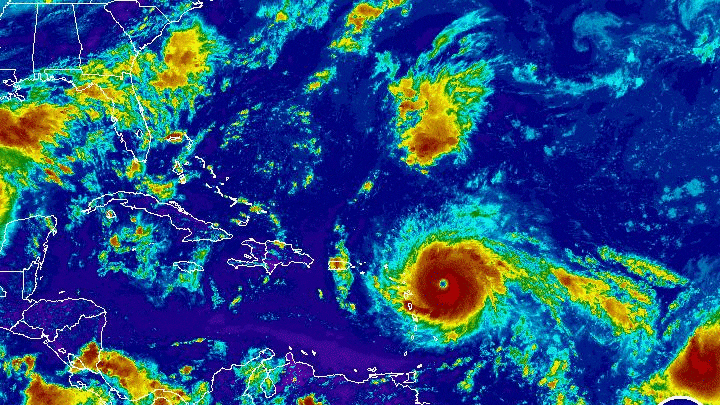As a kid growing up in Florida, we didn’t have snow days. We had hurricane days.
Most of my childhood, I knew hurricanes to be massive, terrifying storms that would inflate in the Atlantic and then dissolve into tropical storms by the time they hit Florida. During September, it was common to have days off from school as a precaution, and often it was just a few days of rain and not much else.

This August 12, 2004 NOAA satellite image shows Hurricane Charley moving over Cuba, one day before slamming into Florida.
NOAA via GettyIn 2004, as Hurricane Charley barreled toward Florida, I invited a handful of friends over for a hurricane party. Typical teenagers, we mocked the Category 4 hurricane and smugly thought we would ride out a glorified thunderstorm sneaking beers from my parents’ stash. Little did we know, we would later be huddled under the stairs of my childhood home as the back porch detached completely and flew into our front yard. We’d watch in horror as the sliding glass door in the living room bowed with the 150-mph gusts, and hundred-year-old oak trees collapsed left and right outside.
ADVERTISEMENT

Volunteer Buddy Shipp sits in the destroyed Peace River Church of Christ August 22, 2004 in Punta Gorda, Florida. The church's roof was blown off by Hurricane Charley but church members have vowed to rebuild.
Mario Tama/GettyThe devastation to Florida was undeniable. My hometown of Polk County usually doesn’t get the brunt of storms because it’s central to the state, but in 2004, three separate hurricane paths crossed there. Central Florida is freckled with dozens of lakes, and all of them swelled with flooding. Power lines laid across highways in giant puddles of water for weeks. Gas stations became expensive hubs for long lines and angry people. As the city struggled to get power back to the masses, we were hit with another hurricane. And then another one. And another.

This National Oceanic and Atmospheric Association satellite image shows Hurricane Jeanne hitting the eastern coast of Florida on September 26, 2004 in the Atlantic Ocean.
NOAA via GettyIn a span of four weeks, Florida was slammed with four major storms—the result of a perfect El Niño cocktail of sea surface temperature and air pressure for hurricanes to flourish. Hurricanes Frances, Ivan, and Jeanne weren’t as strong as Charley by landfall, but they exacerbated an already bad situation that the state wasn’t prepared for. No other state had been affected by four hurricanes in one season since Texas in 1886, and 117 people died in Florida alone.

Where the paths of the three major hurricanes intersected in Polk County, Florida.
Public DomainFlorida’s tempestuous past is a lengthy one. In 1992, Hurricane Andrew had brought unprecedented damage to the Sunshine State with 65 deaths and $26.5 billion in damages.

What is left of one neighborhood after Hurricane Andrew ripped through the South Dade City, Florida.
Mark Peterson/Corbis via Getty
A grocery store posts a sign letting victims of Hurricane Andrew know that they are out of food and water.
Steve Starr/Corbis via GettyLike Hurricane Irma, Hurricane Andrew was a Category 5, the strongest hurricane classification on the Saffir-Simpson scale. The strongest recorded hurricane to hit the United States was the Florida Keys Labor Day Hurricane of 1935. According to the NOAA, the combination of winds and tides resulted in 408 deaths in the Florida Keys, many of which were World War I veterans working in the area.

Surface weather analysis of the 1935 Labor Day hurricane.
NOAAAs Hurricane Irma churns slowly though the Atlantic, devastating the Caribbean islands with its eye on Florida, it has joined the ranks of the most powerful hurricanes on record. Hopefully it won’t join the ranks of the most devastating.





